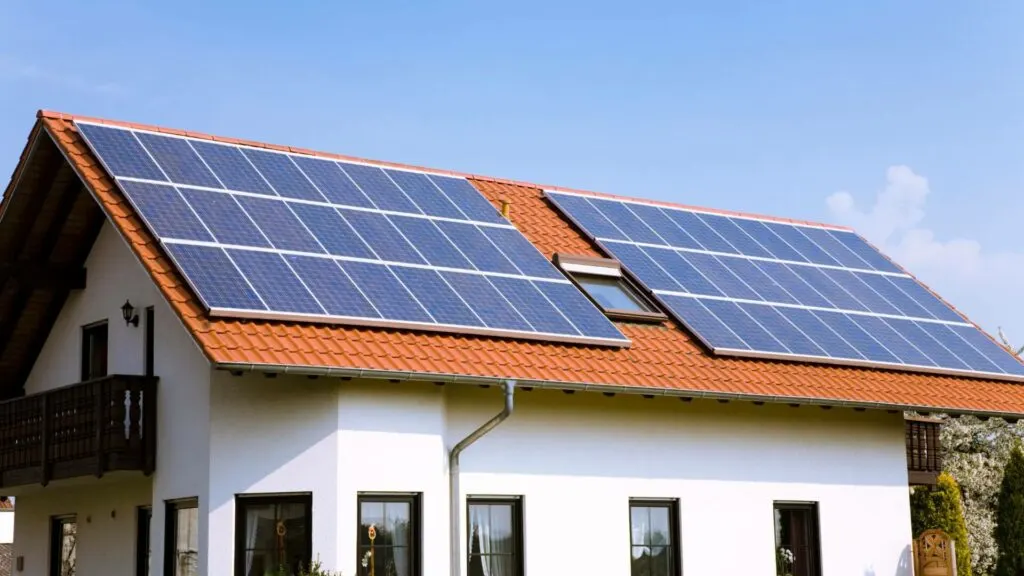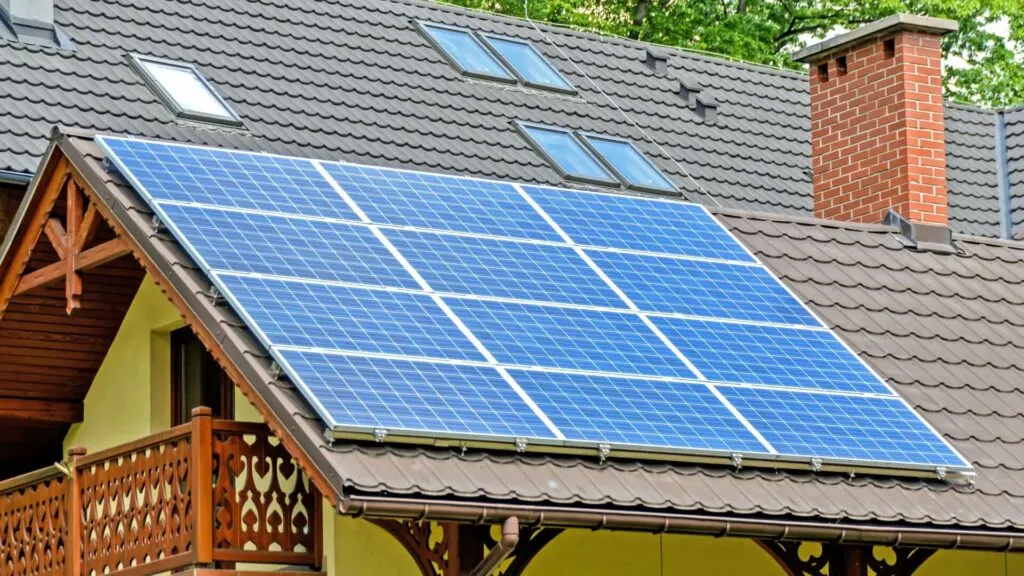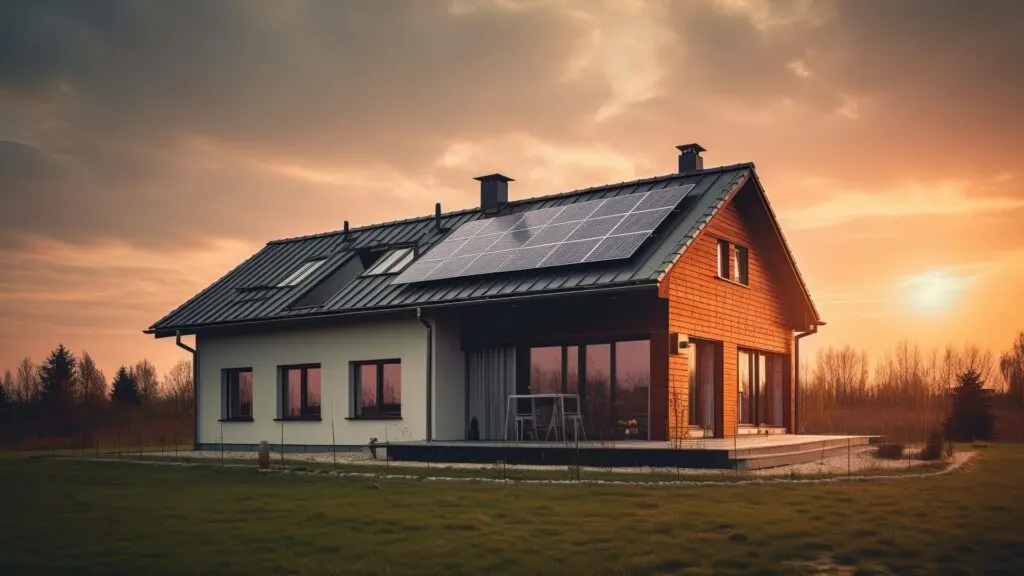Home solar energy systems have emerged as a key solution for homeowners seeking to reduce their electricity bills with the help of solarenergyhackers.com while contributing to a more sustainable future. These systems harness the sun’s energy using solar panels, which convert sunlight into electrical power. The core of any residential solar power system is the photovoltaic cell, commonly called a solar cell. When sunlight hits these cells, they generate an electric current, which is then used to power a home or business.

Residential solar energy systems might include additional components like inverters and battery storage. The inverter plays a critical role, transforming direct current (DC) generated by the solar panels into alternating current (AC), which can be used to power household appliances. Some systems are connected to the main power grid, allowing homeowners to feed excess electricity back into the grid, often for a credit or draw from the grid when solar production is insufficient.
The adoption of home solar energy systems is on the rise as the technology becomes more efficient and affordable. Investing in a home solar system could potentially increase property value, as solar installations are considered value-adding improvements, similar to renovations. Furthermore, the shift towards renewable energy sources such as solar reflects a growing awareness of environmental issues and a desire to decrease reliance on fossil fuels.
Fundamentals of Solar Energy
Home solar energy systems harness the power of the sun to generate electricity, offering a renewable and efficient means to power a residence. Understanding the fundamentals of solar energy involves grasping the basics of photovoltaic technology and the key components that constitute home solar systems.
Solar Energy and Photovoltaic Technology
Solar power is derived from sunlight, an abundant and renewable energy source. The solar cells, the building blocks of photovoltaic (PV) technology, directly convert sunlight into direct current (DC) electricity through a process known as the photovoltaic effect. In this process, photons from sunlight strike the solar cells, which consist of semiconductors, typically silicon. These semiconductors have properties that allow them to absorb photons and release electrons, thereby creating an electrical current.
At the heart of each solar cell is the photovoltaic effect. This effect is the generation of electric current or voltage in a material upon exposure to light. The efficiency of this conversion plays a crucial role in the overall yield of a solar power system.
Components of Home Solar Systems
- Solar Panels: Solar panels are assembled of solar cells, which capture sunlight and convert it into DC electricity. They are typically mounted on the roof or an appropriate structure with clear access to the sun.
- Inverters: To make the electricity usable for common household appliances, an inverter is used to convert the DC electricity produced by the panels into alternating current (AC) electricity.
- Battery Storage: Solar energy systems may include a battery or battery storage system to store excess energy generated during the day. Batteries allow homeowners to use solar energy even when sunlight is not available.
- Electrical Panel: Often referred to as a breaker box, the electrical panel is where the AC electricity is directed so it can be distributed to the various electrical circuits in the home.
- Wires: Properly rated wires are crucial for connecting the solar panels, inverter, battery storage, and electrical panel while ensuring the safe transmission of electrical current.
- Solar Inverter: Specifically designed for solar applications, a solar inverter not only converts electricity but also optimizes the performance of the solar panels and ensures the quality and safety of the electricity supplied.
Every individual home solar system may vary slightly; however, these components are generally present and work in conjunction to harness and utilize solar energy effectively.
Installation and Operation of Home Solar Systems
The correct installation and diligent operation of home solar systems are essential to optimize energy production and ensure long-term functionality. These systems convert sunlight into electrical power, requiring careful planning, connection to the electricity grid, and regular maintenance.
Planning and Installing Solar Panels

Solar panels are the cornerstone of a residential solar system. Installation starts with determining the most suitable location, typically rooftops, that have the proper orientation and minimal shading. Key factors for placement include:
- Angle of Installation: to maximize sun exposure throughout the year.
- Avoidance of Shading: from trees or nearby structures that would diminish efficiency.
Securing financing and handling permitting are necessary steps before installation can commence. Professional solar installers assess these factors and design a system tailored to a home’s energy consumption needs and the roof’s characteristics.
Connecting to the Grid
Grid-tied solar systems are connected to the local electricity grid to manage excess generation and provide electricity during power outages. This integration typically involves a process termed net metering, where homeowners can:
- Feed surplus electricity back to the grid.
- Receive credits from their utility company, offsetting future electricity usage.
This connection requires an inverter, converting direct current (DC) generated by the panels into alternating current (AC) usable in the home.
Solar System Management and Maintenance
Once operational, the solar system requires management and maintenance to sustain peak performance. Regular tasks include:

- Cleaning Panels: Remove dirt and debris that might block sunlight.
- Monitoring System Health: checking inverters, connections, and efficiency ratings.
Additionally, integrating solar panels with heat pumps or solar hot water systems can reduce energy bills further. Maintenance ensures components like batteries or the inverter are not compromised by extreme heat or other weather-related factors.
In short, a well-implemented solar system not only contributes to a cleaner energy profile for the home but can also offer significant financial benefits over time.
Economic and Environmental Impact
Home solar energy systems are reshaping energy economics and contributing significantly to environmental conservation. They present a tangible way to achieve energy independence while ensuring affordability through various financial incentives.
Cost and Savings
The initial cost of solar panels has traditionally been a hurdle, yet prices have steadily decreased due to advancements in solar panel efficiency and market growth. As of 2024, the average installation cost of solar panels is offset by substantial savings on electric bills. Importantly, the investment tax credit (ITC) enhances affordability, allowing homeowners to deduct a significant percentage of their solar costs from their taxes.
- Initial solar panels cost: Can be high but is mitigated by long-term savings.
- Economic Incentives: Tax credits and rebates include the investment tax credit, reducing the overall cost.
- Electric Bills: Typical savings result from reduced reliance on the grid.
- Solar Quotes: Essential for understanding the financial outlay and potential savings.
- Soft Costs: Include permitting, inspection, and installation, but have decreased due to streamlined processes.
Environmental Benefits
Solar energy systems contribute to the reduction of the carbon footprint by offsetting the reliance on fossil fuels, a principal driver of climate change. The use of renewable energy sources, such as solar power, offers a clean alternative that significantly reduces greenhouse gas emissions.
- Energy Independence: Solar panels paired with solar batteries can store excess energy, enhancing self-sufficiency.
- Renewable Energy Sources: They are boundless and produce minimal environmental impact compared to fossil fuels.
- Carbon Footprint: A solar energy system on a single home can substantially reduce annual carbon emissions.
By harnessing solar energy, homeowners not only take a step towards economic savings but also partake in the vital movement towards environmental sustainability.
Advanced Solar Technologies and Trends
This section delves into the latest developments and future direction in solar technology, addressing the significant strides in innovative solutions as well as the market’s trajectory and potential.

Innovative Solar Energy Solutions
Emerging solar technologies are shaping a new paradigm for renewable energy. Oxford PV is at the forefront with its perovskite tandem cell, achieving a commercial-size cell efficiency of 28.6%. This marks a substantial improvement over traditional photovoltaic cells, which conventionally capture less of the available solar spectrum.
Another cutting-edge advancement includes integrating solar panels with energy storage systems, which is gaining traction. Modern battery technologies, such as improved lithium-ion and flow batteries, are specifically optimized for solar energy storage. These batteries feature a higher energy density and longevity, which are vital for both off-grid and hybrid systems.
Concentrated solar power (CSP) systems and solar thermal energy technologies continue to evolve. CSP uses mirrors or lenses to concentrate a large area of sunlight, or solar thermal energy, onto a small area. Electricity is generated when the concentrated light is converted to heat, which drives a heat engine (usually a steam turbine) connected to an electrical power generator.
Community solar projects are expanding access to solar for those who may not have suitable rooftops for solar panels. These programs allow customers to benefit from solar energy by subscribing to a portion of an off-site solar installation and receiving a credit on their electricity bill.
Market and Future Outlook
The solar energy industry’s future is characterized by a mix of technological innovation and increasing adoption. Solar technologies are not just limited to individual homes but are scaling up to utility-scale solar power plants.
| Aspect | Description |
|---|---|
| Increased Adoption | Rooftop solar panels continue to see a rise in both residential and commercial sectors with an inclination towards self-sustaining off-grid systems. |
| Technological Advancements | Research into alternative materials like perovskites aims to create more efficient and less expensive solar options. |
| Solar Energy Storage | Advancements in storage technology are crucial for managing the intermittent nature of solar power, helping to stabilize the grid. |
| Growth of Solar Marketplaces | Platforms like the Energy Sage Marketplace are making it easier for consumers to compare solar options and foster competitive pricing. |
| Manufacturing Improvements | Enhanced manufacturing processes are leading to cost reductions and increased efficiency in solar panel production. |
Governments and private institutions, such as the Solar Energy Technologies Office, play a significant role in funding research and development to drive down costs and improve efficiency, catalyzing the market growth.
Solar companies are racing to commercialize next-generation technologies that could transform solar energy’s role in the global energy landscape, with a strategic focus on deployment at scale.
The intersection of these technologies and market forces suggests that solar energy will continue to play an increasingly important role in global energy systems, with innovation opening up new avenues for utilization and integration.

Jessi is the creative mind behind The Coffee Mom, a popular blog that combines parenting advice, travel tips, and a love for all things Disney. As a trusted Disney influencer and passionate storyteller, Jessi’s authentic insights and relatable content resonate with readers worldwide.
